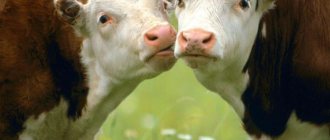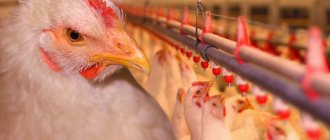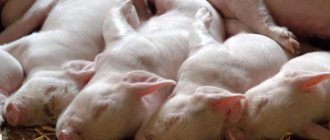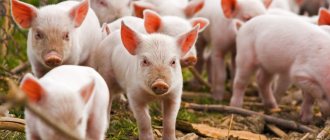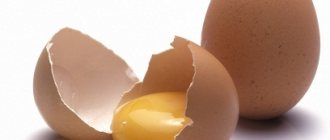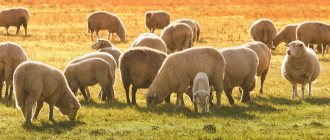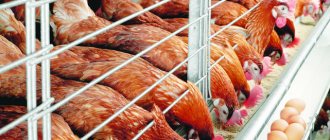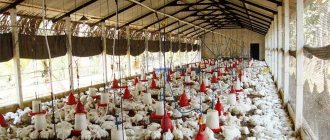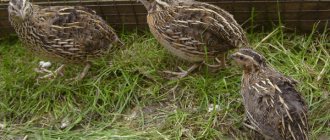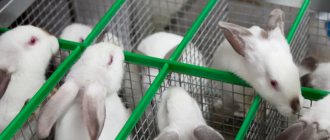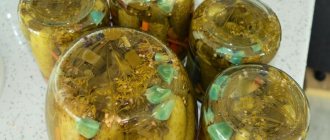Breeding horses requires a lot of responsibility, so this business is not suitable for everyone. A large initial investment is also required. But the revenue from this activity reaches tens and hundreds of thousands. To get maximum income from the business, you should carefully work out a horse breeding business plan - calculate the costs of starting a business, purchase the necessary equipment, find markets, and more. We will tell you in our article whether it is profitable to keep horses and how to open your own farm.
Features of the horse breeding business
Breeding horses as a business is a complex process when compared with raising quails, rabbits and other small animals. Here the time frame is much wider and more resources are needed. It is also important to have knowledge in the field of horse breeding. After all, if you don’t know the anatomy and vital functions of horses, you won’t be able to take proper care of them.
As for the financial issue, buying a horse is an expensive pleasure. And organizing an entire ranch will require huge investments.
The point of breeding horses is to sell them in the future. Therefore, it is very important to decide on the sales markets at the initial stage. If you do not find a buyer or client who will rent horses on an ongoing basis, then opening a business is pointless.
As a rule, businesses in this area are opened by people guided not so much by economic considerations as by an interest in the horses themselves. At the initial stage of development, small horse breeding farms rarely become a source of significant profit and have high profitability. Due to the fact that it takes a lot of time to raise a herd, such stables receive their main income by offering various services, for example, horse riding lessons or organizing horse rides.
Staff
Personnel in any area of animal husbandry must be selected carefully, because people will have to work with animals that require special care and concern. Specialists should be hired with knowledge of horses and who already know how to get along with them.
If you are developing a training center , you will need staff with horse riding and training skills for beginners. This service is now quite popular among both adults and children, especially in large cities.
a veterinarian is required . The horses will spend all their time on your farm. And if you want to build a successful business, then all animals must be healthy. And the first symptoms of illness must be noticed and eliminated in time.
In addition to the veterinarian himself, it is highly advisable that you yourself have an idea about the health of horses. By studying their characteristics, disposition, nutritional conditions and life cycle, you will have an idea of what to do in certain situations. If you have no experience in this matter, you may need to take specialized courses, or hire a temporarily knowledgeable person to help clear up your ignorance.
If you have an idea about all this, you can avoid hiring a veterinarian as a permanent staff member, saving a certain amount of monthly expenses your salary fund . But, at a minimum, it is necessary to know where he is, have contacts at hand and periodically invite him to inspect the animals for a certain fee.
Advantages and disadvantages
Horse breeding, like any type of business, has its advantages and disadvantages.
The advantages include the following:
- With proper organization of business, you can get stable, large profits
- The niche is practically empty, and the number of potential clients who want to buy a horse is growing
- There are opportunities to earn additional income - selling mares' milk, trading in harness and other accessories for horses
The disadvantages of horse breeding, other than the large initial investment, mainly relate to the care of the horses. This is a constant need for high-quality expensive food and the need to regularly visit the veterinarian.
Conclusion
Organizing a horse breeding business is a complex, troublesome process that requires certain skills and abilities. Only those who feel confident in themselves, have the habit of achieving their goals, are purposeful and are not afraid of difficulties can cope with it properly. But there will definitely be difficulties, as in any business. The main thing is that if you yourself love animals, know how to find a common language with them and are ready to take certain risks , then you can safely start.
And although, in an unstable economic situation, running a business is doubly difficult, such an activity, with the proper approach and a well-written business plan, can pay off handsomely.
If you follow the tactics you have learned and are prepared for risks and constant work, you will end up with an excellent horse breeding farm with a good reputation and an extensive customer base . And all this together promises benefits and considerable profits. But the most important thing is the pleasure of communicating with animals, which will help you run your business no worse than having investment funds.
You can find another 1000 best business models in the sections: Business ideas or Franchise
How to start a horse breeding business
If you clearly formulate and correctly calculate a horse breeding business plan, this will protect you from failure, ensure a quick payback on the project and good income in the future.
Business registration
You can register a peasant farm. Thanks to this form of activity, it is possible to lease land plots on preferential terms and pay low agricultural taxes. Participants in a peasant farm can be members of one family, a community or one person.
To register a peasant farm, you will need the following documents:
- Application on form P21002
- Copy of the applicant's passport
- Receipt confirming payment of the state duty
- Agreement between members of the peasant farm (if several persons operate on the farm)
If you plan to sell meat products, permits will be required:
- Rospotrebnadzor
- Sanitary and epidemiological stations
- Veterinary service
- Fire inspection
Mandatory conditions for conducting business:
- Obtaining a trade permit
- Availability of medical books for employees
- Registration of veterinary passports for horses
Stables: rent or purchase of premises
First of all, you need to decide whether renting a premises is right for you or whether it will be more efficient and profitable to buy a building or build your own. If you choose the latter option, you will have to wait a little while starting a business, since building a stable will take a lot of time. But the advantage of construction is that it will be possible to choose a more profitable and productive place for the stable location. Whether to rent or buy premises is up to each entrepreneur to decide for himself, depending on his capital.
Breeding place
Horse breeding as a business is not suitable for small settlements, since the potential audience here is already small. Therefore, you need to open a farm where you can find a sufficient number of paying clients. But if the town is a resort town, and, in addition to the indigenous residents, you are visited by tourists, then in such conditions business can only flourish.
Many entrepreneurs open farms on the outskirts of cities or in villages, where there is not much traffic and there is plenty of space for a stable with a walking area.
On a horse breeding farm you need:
- Stable for overnight stay. Each horse is allocated 3-4 m²
- Walking area. The territory may not be very large, but it must be fenced
- Warehouse for storing prepared feed and ammunition
- Indoor arena for winter walking of horses
Recruitment
To fully operate the farm you will need:
- Grooms (4-5 horses per one)
- Diet and regimen development technologist
- A veterinarian who will constantly monitor the health of horses
- Manager whose responsibilities include general management, contacts with suppliers and customers, accounting and reporting
- Trainers and jockeys for horses that participate in racing and sports
All workers must have appropriate knowledge and skills, treat horses well, understand their needs and perform all care responsibilities.
Horse feed suppliers
The food must meet all standards and be of high quality. This is the only way you can prevent unexpected illnesses in your charges. In addition to the feed itself, it is necessary to constantly buy sawdust for bedding, which also has its own quality characteristics.
It is necessary to pay attention to the reputation of the supplier. You can ask the opinion of people who have already purchased food from him, or look for information about the supplier on specialized forums.
Earning options
When developing a business plan for a horse farm, you need to decide on options for earning money. It could be:
- Raising foals for sale
- Breeding horses for meat
- Breeding sports breeds for performance at racetracks
Additional sources of income can be:
- Rehabilitation activities involving horses
- Horse riding lessons
- Renting horses for temporary use
- Trade in harness and accessories
Veterinary service
Veterinary care is a decisive factor in the success of this business. Even if one animal becomes ill, the farm’s reputation can be irreparably damaged, and it will have to leave the market. Therefore, so that diseases do not take you by surprise, it is necessary to have a veterinarian on staff or use the services of a visiting veterinarian. From a financial point of view, the second option is more profitable, but a full-time veterinarian will always be aware of the intricacies of horses’ growth, their individual developmental characteristics, and will make decisions faster if treatment is necessary.
Stern
An entrepreneur should think about purchasing feed in advance. A horse's standard diet includes:
- hay;
- oats;
- fertilizing
The diet may vary depending on the recommendations of the veterinarian and the loads the animal bears. You need to purchase only high-quality feed.
Saving on hay will immediately affect the health of animals. Therefore, an entrepreneur must have stable feed suppliers. There should be no interruptions.
Horse management
Breeding horses is a responsible process. The following content rules must be observed:
- Temperature in the stable. It is necessary to provide horses with a comfortable temperature regime - 5–15 ०С
- Water. The daily fluid requirement for a horse is 50 liters. If you do not follow the drinking regime, your animal may develop health problems.
- Litter. Sawdust may not always be suitable. The best option is straw
- Walking. Horses need to walk for several hours - this is a mandatory daily ritual.
On the stable grounds, horses are kept in spacious stalls at a rate of 3–10 m² per animal. They must be equipped with a feeder and drinker.
Horses destined for slaughter are usually kept in the open air, they graze on their own, but sometimes they are fed. Racehorses, like stud stallions, are kept in closed stalls, fed, walked and trained according to a regimen. Pregnant mares are kept in separate rooms, provided with special nutrition and constant supervision by a veterinarian.
Caring for horses involves combing the mane and tail with combs. Brushes and scrapers are used to clean the skin, and special tools are used for hooves. Animals need to be shoed periodically. Horseshoes protect horses' hooves the same way shoes protect human feet. During the horseshoeing process, part of the stratum corneum is cut off, so it is better to trust the procedure only to a person who is well acquainted with the specifics of the work.
These animals are susceptible to many diseases; one sick horse can infect the entire herd. To reduce the risk of disease, animals must be vaccinated and undergo regular medical examinations.
60% of a horse's diet consists of grass and hay. The menu should also include oats and barley - 20% of the total daily portion, as they contain substances that contribute to weight gain. For good digestion of food you need bran and feed - 8%. Vegetables (beets, potatoes, carrots) contain minerals and vitamins that are necessary for the horse’s body - 12%. The average daily feed intake for an adult horse is 25 kg.
It is also necessary to add rock salt to the diet - about 1 kg per month per animal. Sometimes horses are given nutritional complexes and special supplements.
Selection
Horses are particularly demanding animals; accordingly, breeding representatives of a certain species is associated with the integral task of satisfying the mandatory aspects that are responsible for the positive results of the work. The beginning of breeding presupposes a preliminary extensive analysis, on the basis of which further actions are developed.
It is necessary to initially outline the results of selection and, of course, further stages associated with reproduction and cultivation. An important point is the living conditions of the individual, care work and diet. Where horse breeding is developed in Russia and horse breeding in countries around the world - we will consider below.
Financial costs and income
The costs of constructing and equipping a farm directly depend on the scale of the business, so all costs here are individual. Feed for one animal per day will require about 400 rubles, per month - 12,000 rubles. In addition, there will be expenses for taxes, staff salaries, utility bills, advertising and more. Therefore, the average amount for opening a small horse farm is about 4–6 million rubles.
Earning basis:
- Sale of breeding stallions - from 100,000 to 350,000 rubles per one
- Private horse riding lessons - 2,500–3,000 rubles per hour
- Horse rental - 1,500 rubles per hour
Additional income can come from providing tourist routes and caring for clients’ personal horses.
The business pays off in 3-4 years, its profitability is 40–100%.
Tarpan
The wild ancestor of the European domestic horse was the tarpan, which lived in the steppe and forest-steppe zones of Eurasia. It is believed that the tarpans became extinct due to the plowing of the steppes, displacement by herds of domestic animals, and were to a small extent exterminated by humans. During the winter starvation, tarpans often ate the hay reserves left in the fields and meadows. It happened that during the rut the tarpans captured and stole domestic mares, for which the man persecuted them. A herd of domestic horses, once free, quickly runs wild and begins to lead a lifestyle characteristic of its wild ancestors. Tarpan meat was considered a rare and delicious food. Tarpans lived for the longest time in the Black Sea steppes. There they disappeared only in the second half of the 19th century.
Mustangs
Mustangs are the name given to the feral horses of America that were brought to the New World by European colonialists. Mustangs appeared on the American prairies and savannas as early as the 16th century. By the beginning of the 20th century, there were about 2 million mustangs in America. They were popular hunting objects at that time. Mustang hunting and grazing reduction have significantly reduced the feral horse population. To date, about 10-20 thousand mustangs have survived.
Camargue horses of France
In France, in the Rhone delta, the Camargue population of semi-wild white, that is, light gray, horses has been preserved.
The wild horse was an inhabitant of open spaces. She could flee in case of danger.
